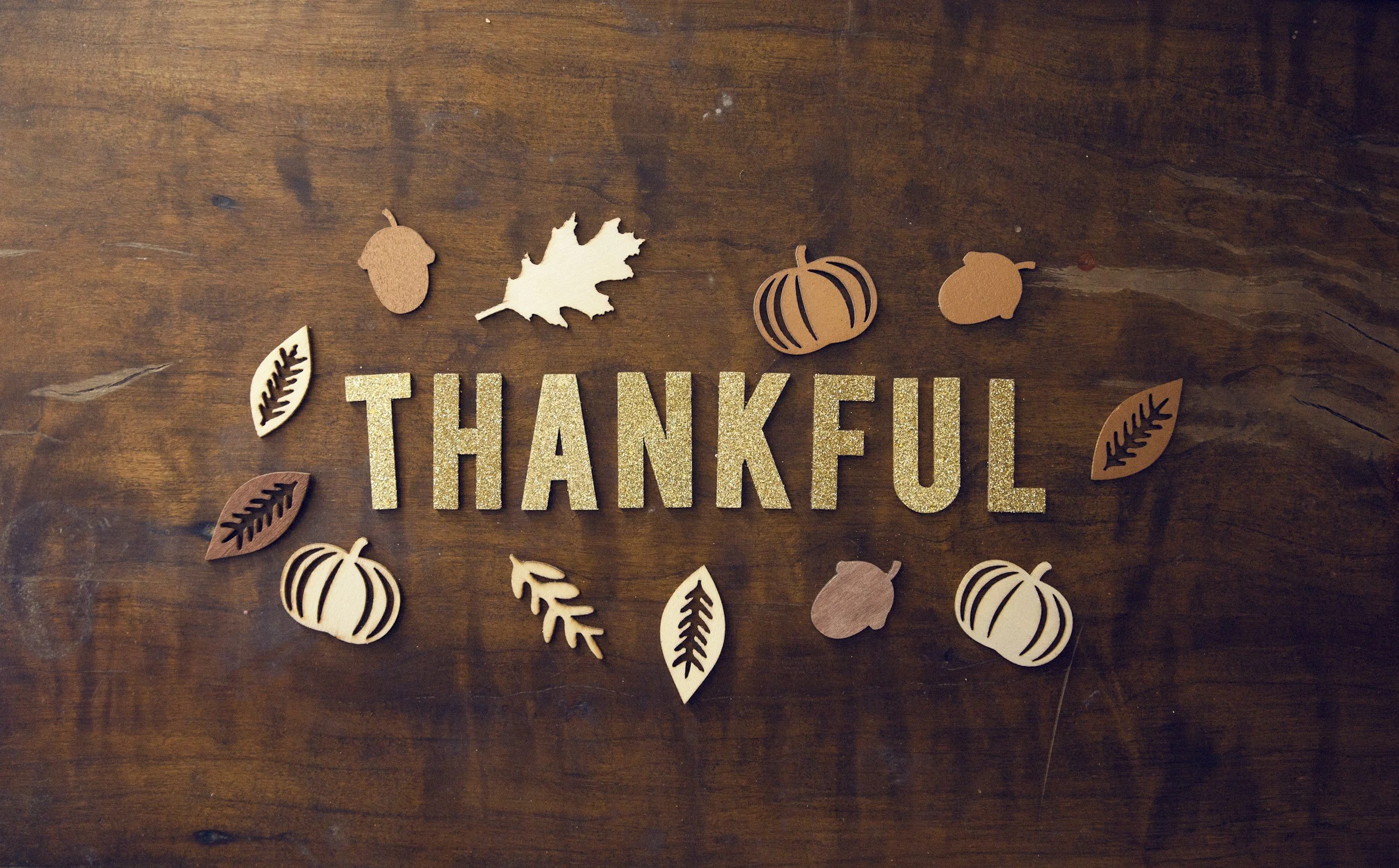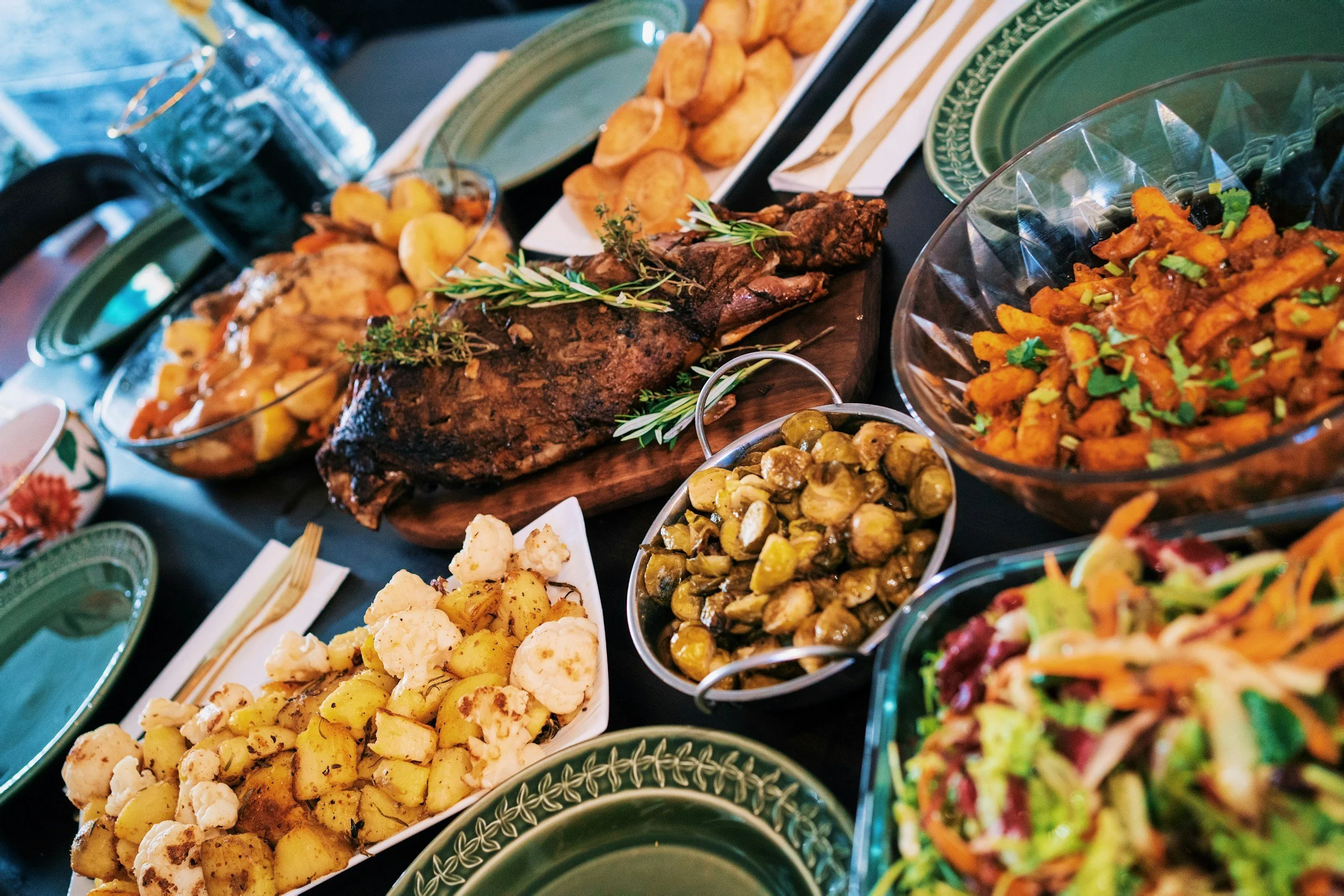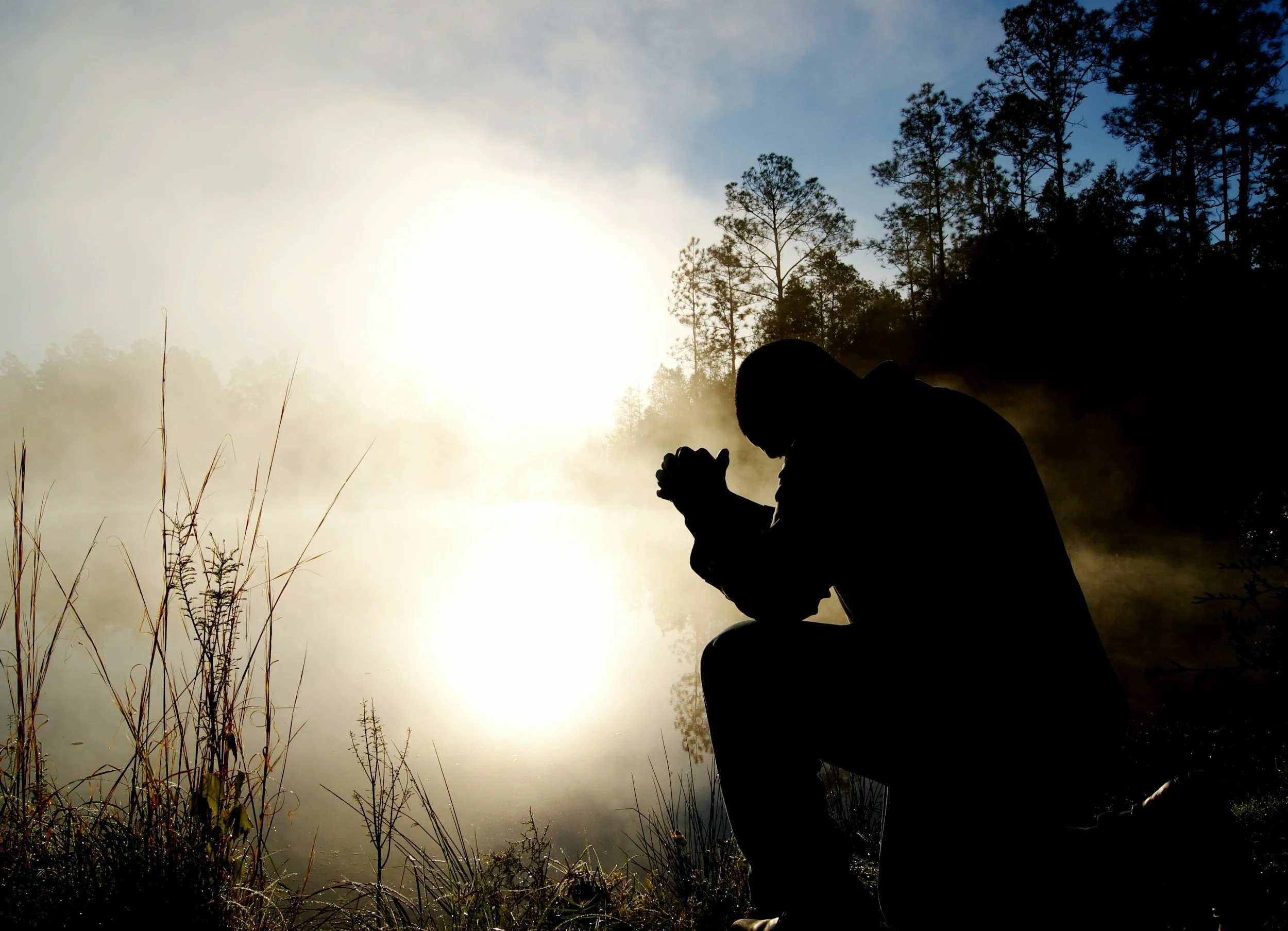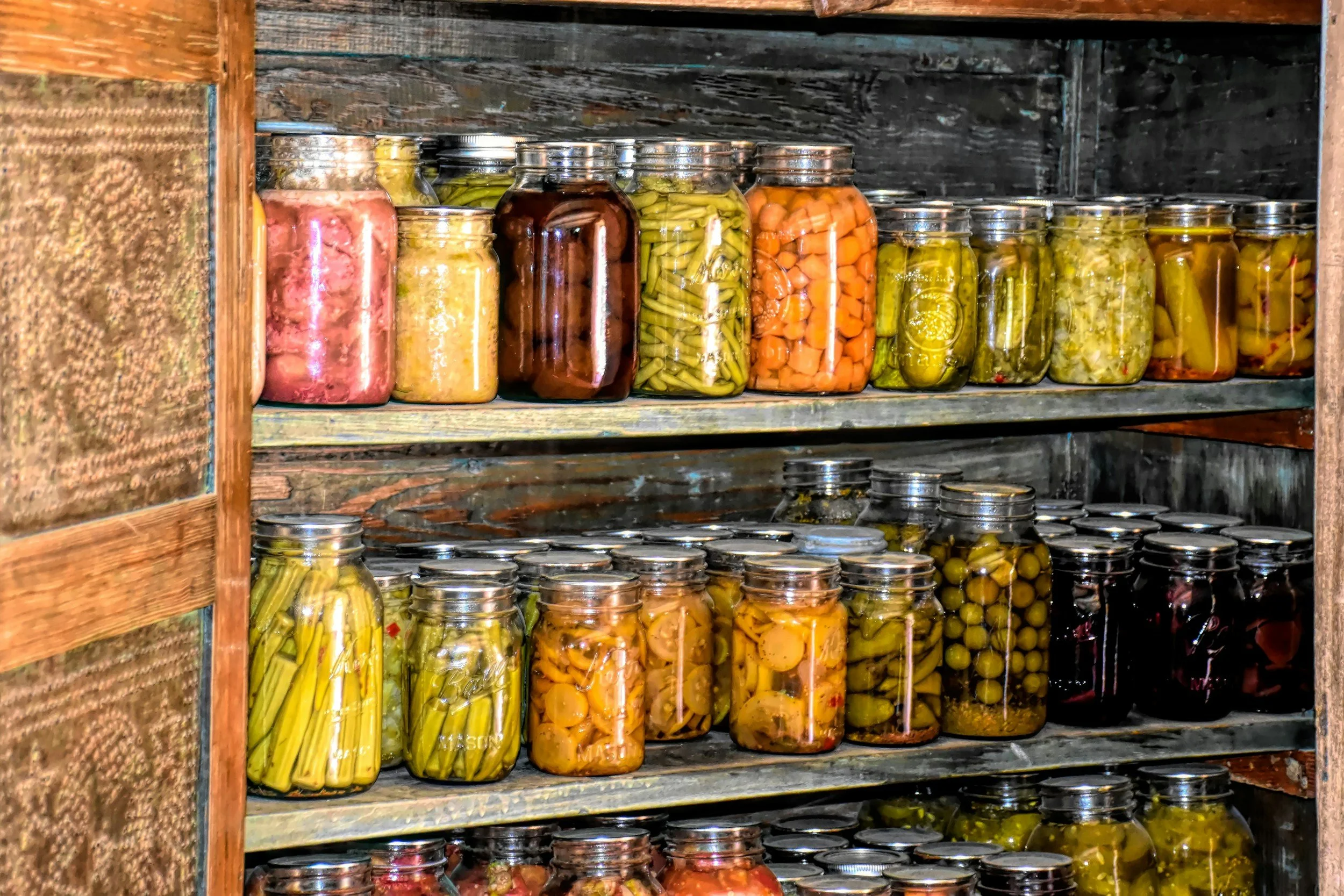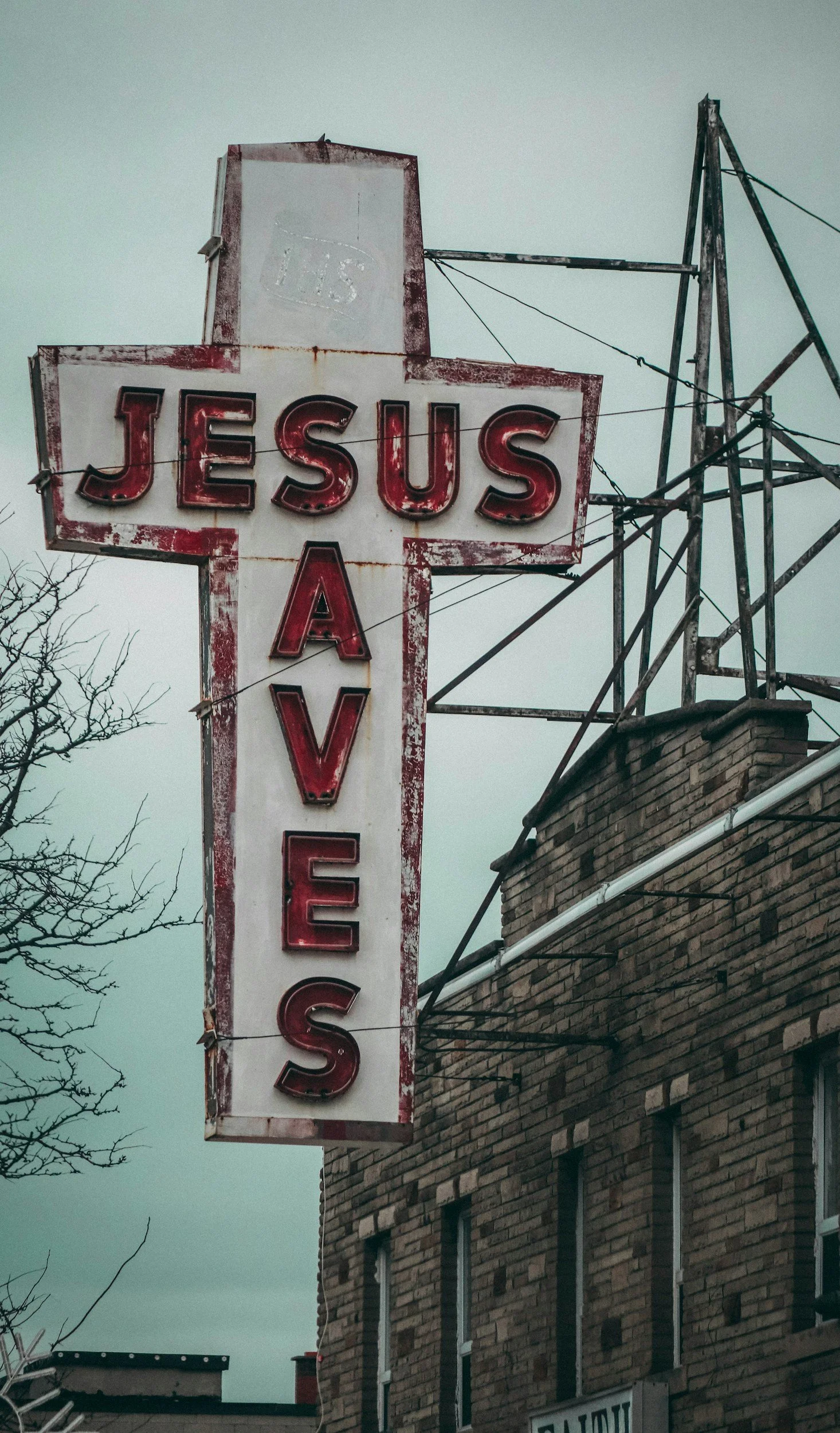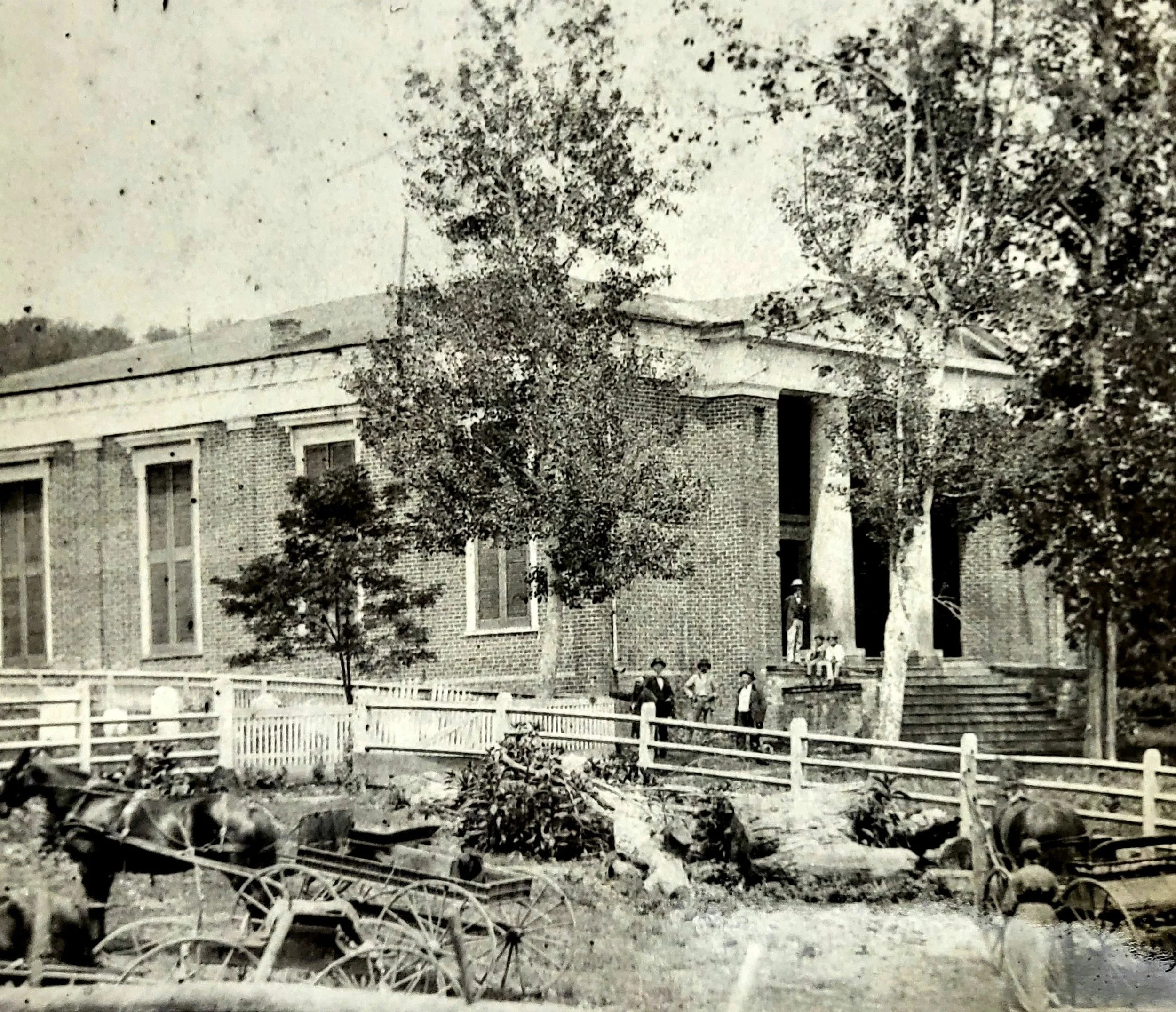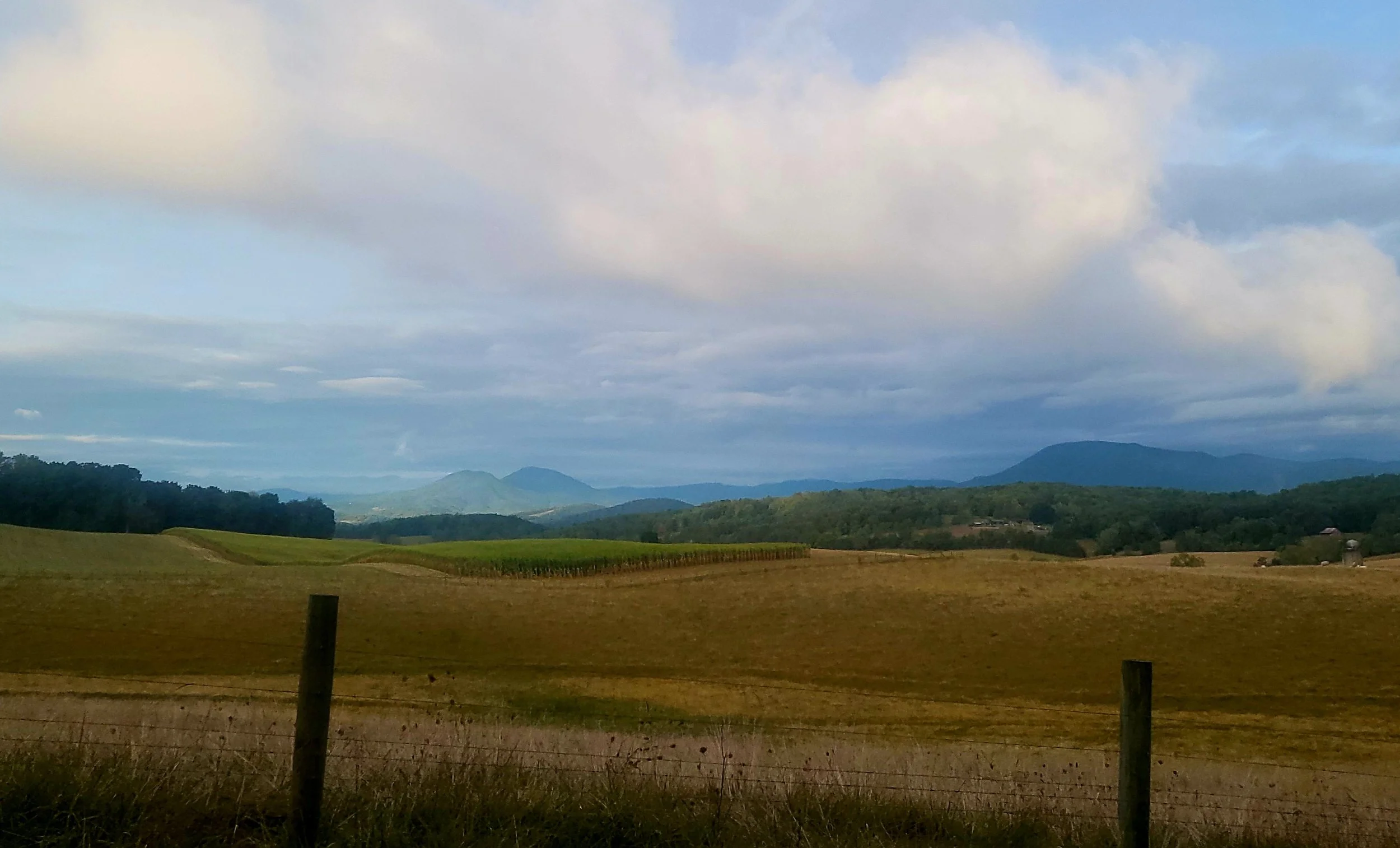Monday Manna
Every Monday Pastor Loren starts the week with a brief devotion entitled Monday Manna. You can read them here or email us to be on our mailing list!
Rooting for redemption
All I want for Christmas 2025 is the character of Steve Harrington to survive the final season of Stranger Things. I’m kidding, sort of. What I would really love is for the aura of Steve Harrington to survive in the real world. Harrington’s character arc is one of hard fought and unexpected redemption. In fact, the show creators, Matt and Ross Duffer intended for Steve to be a minor character that got killed off in season one, but they came to love the actor Joe Keery so much, they decided to keep him. What started off as a stereotypical high-school bully that you’d love to see eaten by a monster, became one of the most beloved characters of the highly popular show. When faced with adversity, Steve learns how important authentic relationships are to survival. Fans of the show call him the world’s best babysitter, because he ends up spending a lot of time trying to convince the younger teen characters that their ideas are risky and dangerous, but when they don’t listen to him, he always goes along to try and keep them safe. I just really hope when the final battle of the apocalypse comes to Hawkins, Indiana on New Year’s Eve, Steve is left standing.
The real world could take a lesson or two from Steve, and not just about his great 80’s styled hair (he uses Farah Fawcett hairspray by the way).
First, we don’t need to be bullies to survive! The whole idea that we have to outwit another person with our words or punch out first or we become the ones getting punched is absurd. We don’t need to build ourselves up to be these unflinching people who harden our hearts to block out pain while throwing everyone else to the wolves. Why we think power and cruelty must go together is beyond me. Life is much richer when we open ourselves up to vulnerability, that’s real courage. Steve got the snot beat out of him in season one, and honestly, he deserved it. But this wake-up call took him from bully to protector.
[Think Pharoah, Joseph’s brothers, Hamaan, Jonah, Herod, Saul/Paul]
Second, real strength isn’t found in the individual but in community. Had Steve’s character limped off into the shadows after his embarrassing loss in season one, he would not have survived—but instead, he shed his self-centered, too cool behavior by showing concern for someone he truly cared about and became part of a team. His role became big brother in a way; not always the brightest crayon in the box (he did sleep through algebra one) but a fierce protector, willing to drive his precious beamer full of friends straight into the upside down to defeat evil. He learns that if he is there for his friends, they will also, in turn, be there for him.
[Think Moses, King David, Job, Naomi & Ruth, Jesus’ disciples, the apostles like Paul]
Third, we are our brothers’ keeper—everyone could use a “babysitter” like Steve from time to time. One of the best lines from the show is when another character, Robin, asks Steve, “how many children are you friends with” as the middle school aged kids keep showing up at his place of work. But by season five, Steve is so frustrated by his young friend Dustin’s rebellious behavior, he snaps at him. When Dustin says, “your concern for me is overwhelming,” Steve replies, “My Concern! I have shown nothing but concern for you for forever!” Honestly, as a wife and mother, I’ve never felt so seen.
[Think Cain and Abel, Esther, Daniel, Peter, Lydia, Philemon & Onesimus]
The point is, we need to pay attention to each other, to look out for each other. The world is full of bullies, darkness, and cruelty happening right before our eyes. The best way to fight all that is together, and with the Light of Christ before us. At the end of the day, we are all humans, all children of God. All deserving of respect, love, and a shot at redemption. It’s never too late.
“Sermonizing”
Writing a sermon is kind of like preparing for Thanksgiving Dinner…you read a bunch of recipes, you throw a bunch of ingredients together, and pray the turkey isn’t still frozen!
Sometimes, as the young people say, “you’re cooking” and it all comes together beautifully, the way you might make a dish from memory, passed down from the generations before you. You know, the recipe you can’t really give to anyone because you don’t measure, you just prepare by taste.
Other times, the process is painfully slow, and you wonder if you’ve missed a step or confused your recipes like Rachel’s attempt at an English Trifle (Friends Season 6 Episode 9) where the book’s pages get stuck together and she mixes the trifle recipe with shepherd’s pie. Her dish has lady fingers layered with beef and sautéed onions and peas.
After almost five years of sermons at New Providence, I bet everyone can tell when I’m cooking like Grandma or baking like Rachel.
Most days I’m thankful for the process, and the Holy Spirit coming through for me! And all of you, for listening.
Thankful
For these (and many more things) at New Providence, I give thanks.
Thoughtfulness and Teamwork
History and Heritage
Advent and Angels
Neighbors and Nourishment
Kids and Kin (and Kimberly)
Feasts and Friendship
Unity and Understanding
Laughter and Love
Psalm 107:8-9
8 Let them thank the Lord for his steadfast love,
for his wonderful works to humankind.
9 For he satisfies the thirsty,
and the hungry he fills with good things.
Give it more time
My impatience got the better of me this week. My feelings of utter helplessness and lack of control got the better of me, too. I don’t recall anyone telling me how often as a parent I would wonder if I was doing the right thing. So far (I think) my gut instincts have been correct, at least when it comes to the big things. I texted my mother and said, “How come you never told me I would never know what the best thing to do is?” and she replied, “I never wanted to admit defeat!” When I sent her a GIF of a white flag waving in surrender, she responded, “Sometimes you just have to hug them and hope for the best. I waved that flag a lot!” Honestly, that made me feel a lot better, because my mom was always my go-to person growing up. She always seemed to know what to do, how to fix the boo-boos, how to stop the tears, how to mend the fences.
I stood in my kitchen on Wednesday morning at my wits end, put my elbows on the countertop and prayed to the Lord to give me wisdom, to stop my child’s discomfort and heal his skinny little eleven-year-old frame. Then I called the doctor’s office and talked to a nurse. I explained how hard mornings have been, how that is when his pain is the most pronounced, how I can hardly get him to eat breakfast, much less make the 30-minute car ride to school. I told her that I just didn’t know what else to do for him, I didn’t feel like the medication was helping us, and I was not (am not) cut out to be a homeschool mom. Overseeing make-up work might just end with him in military school! A few minutes later she returned my call with instructions from the doctor to bring him into the hospital, and they would prepare to do surgery to remove his kidney stone. Worried, but also relieved, I broke the news to my boy who broke down in tears, “please, mom, please give me a few more days, just a little more time, please.”
After a few hours that included some bloodwork, an ultrasound, and an x-ray, the doctor came in to see us. He had a very calm bedside manner and spent significant time explaining the pros and cons of surgery to us, all the while his hand resting on my son’s ankle as he looked into his eyes and included him in the conversation. He pulled up the scans from two weeks ago and the scans from that day to compare and revealed to us that the stone is making excellent progress through the urinary tract! I could hardly believe it. In about 12 days, the stone had traveled 12 cm, with only about 5 more to go. There’s just one more spot that might be significantly painful for him before he passes it. When he said, “it’s really up to you all, if he can handle the discomfort a little longer or you are ready to throw in the towel, then we can try to remove it.” My sweet child looked over at me with his big brown eyes, filled with crocodile tears, pleading to go home. I looked to the doctor and said, “Your professional opinion, what would you do?” He waited a few beats, building the suspense, then said, “I’d give it more time.”
And there it was. God’s answer to my kitchen prayer. The doctor apologized for the directive to drive into Roanoke and go through the tests, but I told him I was grateful. I was thankful that he took my concerns seriously and that we were able to get confirmation that we are in fact doing all the right things, that there is an end in sight. God is always at work. It just takes time.
2 Peter 3:8: "But do not forget this one thing, dear friends: With the Lord a day is like a thousand years, and a thousand years are like a day".
Habakkuk 2:3: "For still the vision awaits its appointed time; it hastens to the end—it will not lie. If it seems slow, wait for it; it will surely come; it will not delay".
Psalm 31:15: "My times are in your hands".
God is great, God is Good
God is great
God is good
Let us thank him for our food
By his hands
We all are fed
Give us Lord
Our Daily Bread
Amen.
I prayed this blessing at the dinner table until I moved away from home. In fact, every once in a while, when we return to my parents’ house for a meal I will offer to say grace. I always wonder if I’ll remember it and I am a little surprised when it rolls off my tongue every time. So many memories fade over time but isn’t it funny what sticks? I can also remember the three main phone numbers I dialed as a child: our house, grandma’s house, and my best friend Whitney’s house.
Both of these examples of memorization point to one thing—connection. Connection to God and connection to one another. I remembered those phone numbers because that is how I got in touch with the people who were central to my life. I remembered that blessing at dinner because that is how I was taught to give thanks to God.
How often we say liturgies and prayers by rote…the Lord’s Prayer, the Apostle’s Creed, a familiar line of scripture. But how often do we stop to ponder the meaning behind our words?
God IS great! God IS good! By God’s hands we ALL are FED! Give us our DAILY bread!
God is great and good beyond all measure. God provides for us, feeding us bodily and spiritually. We give thanks and ask that God supply us our daily bread, our manna! We ask for just what we need and trust that God will provide for it every day. We don’t need to hoard the bounty, God is enough.
As we approach the holiday season, I hope we will remember how it is that God provides food for all. Manna does not rain down from the heavens every night and lay on the ground like dew before us. I wish it were that easy. Instead, God has given us the knowledge and means to provide food for all. Yes, were we to fairly distribute food—all would be fed. Instead, our greed and our politics cause some people to have leftovers rotting in the fridge while others starve. I can’t help but think about the sparsely set tables of some of our neighbors and wonder how this blessing over the meal might sound in their ears. While their bellies rumble, do they wonder, is God great, is God good? Are we being fed? Are we receiving daily bread?
It is intended that we are God’s hands and feet in this world! By HIS hands we are all fed! It is our responsibility to care for one another. When Cain murdered his brother Abel out of jealousy and God asked what became of his brother, Cain said, “am I my brother’s keeper?” The implication is a resounding yes!
Ephesians 2:10 reminds us, “10 For we are what he has made us, created in Christ Jesus for good works, which God prepared beforehand so that we may walk in them.”
Because God is great, because God is good, we thank him for our food…then we take upon ourselves the task of ensuring that out of our bounty our brothers and sisters are also receiving their daily bread. Amen.
On Our Knees
When asked if the conversations during fellowship time would inform my Monday Manna this week, I jokingly said, “well we talked about knee replacements…it would be kind of daunting to take communion for those among us with knee problems by kneeling!” I was joking, but the more I thought about it, the more it seemed fitting.
One of the hymns we sang on Sunday in preparation for communion was “Let Us Break Bread Together.” The verses say:
Let us break bread together on our knees.
Let us drink wine together on our knees.
Let us praise God together on our knees.
The refrain further reiterates the cause of our genuflection, and our possible discomfort:
When I fall on my knees with my face to the rising sun, O Lord, have mercy on me.
We kneel before God in humility, in faith, asking for God’s grace upon us, as sinners. We fall short of the glory of God and yes, we need God’s grace. But when we bow before the Lord, we kneel with shelter above our heads. We kneel with warm clothing and shoes on our bodies. While yes, it may be hard on our joints to bend and kneel, we kneel with access to adequate health care. We kneel with full bellies and the knowledge that we will not go hungry. So, we give thanks God has been merciful to us and granted us such blessings.
But others, our very neighbors, fall to their knees with anguished pleas for deliverance. They beg to know the mercy of Christ who not only ate with sinners but fed the hungry and defended the poor. They kneel beneath leaky rooftops and under bridges, Lord have mercy on me. They kneel in tattered jackets and shoes with worn out soles, Lord have mercy on me. They kneel in pain facing medical conditions for which they cannot afford treatment, Lord have mercy on me. They kneel with gnawing hunger and fear that there will not be enough food for their families, Lord have mercy on me.
It is humbling to consider, is it not? I hope it brings us to a place of conviction to consider this juxtaposition. For example, there was not one minute when my child was in pain the other night where I worried that I couldn’t afford to take him to the ER to find out what was wrong. No hesitation, I would do whatever he needs to be healthy. Bring on the specialists! I cannot imagine having to face those types of decisions. Yet I rarely stop long enough to consider many families have to face tough decisions and go without basic needs every day. And so Lord, for the gifts I take for granted and the discomfort that makes me turn a blind eye, Lord have mercy on me.
Flown
October has flown by like a witch on a broomstick! As a lover of October, I’m a bit miffed. It would be very remiss of me if I didn’t thank you all for making October such a lovely month. For both my birthday and Pastor Appreciation Month you have gone above and beyond in showering me with your kindness and generosity. Believe you me, I am the lucky one. As Paul said so eloquently in Philippians 1: 3 I thank my God for every remembrance of you, 4 always in every one of my prayers for all of you, praying with joy 5 for your partnership in the gospel from the first day until now.
Orange leaves
Crunch under booted feet
Traipsing hither and yon
Over pumpkin patches and
By apple orchards
Every day anticipating the chill
Reveling in the merriment of golden days
LTM 10/26/25
Faithful to me
Guess whose brain is tired! Here’s one of my favorite songs, in fact a high school friend sang it at my ordination service. Enjoy.
Grandma Becky
My paternal grandmother was named Phyllis Rebecca. She was born Oct 9, 1922, and went by Becky. I always loved that our birthdays were close together and we shared an opal birthstone. She was a petite woman with dark eyes and hair, a pistol by anyone’s standards, best I can tell. When I was a little girl, she and Papa lived in the same ‘holler’ they’d grown up in and built a little two-bedroom house with a sun porch and car port. They had a big garden on the hill, and a strawberry patch in an elevated bed by the back door. She hung her clothes out on the line and made sun tea in the summer. She saved cool whip containers instead of Tupperware and dirtied every dish in the kitchen making dinner. True to her generation, she quilted beautiful pieces and had enough canned fruits and vegetables in the basement to get us through the apocalypse.
By the time I came along her summer uniform consisted of pastel colored pedal pushers with Keds. I would spend a week with them every summer, and we would go for long walks in the evenings and play in the creek in front of the house. Sometimes I would go with her to church for choir practice or Ladies’ Aid meetings and run around the maze of hallways in the church my dad grew up in, looking for the names of great aunts, uncles, and cousins on the nursery wall and classroom rosters. Or I would play around on the stage of the fellowship hall running through curtains and secret doors, just like the kids at New Providence do today. I can almost smell the place; every church has a scent of its own and Green Hill was no different. I guess the family church was just an extension of their house to me, and the whole neighborhood felt like ours because both homeplaces were still standing nearby. When you’re seven or eight years old the willow tree and the water skates seem like magic.
Sometimes I wish for that simpler time. When smells were more intense, colors more vibrant, and time seemed slower and stretched longer, filled with only the best God had to offer—fireflies, peaches, and snapbeans by the bushel.
How, I wonder, do we harness more of that today?
Waning Summer
From my rocking chair I see
A winged monarch
A humble bee
A thirsty hummingbird
Buzzing at me.
LTM 9.1.25
It is I who made the earth, and created man upon it. I stretched out the heavens with my hands and ordained all their host. Isaiah 45:12
A Sunday in September
We had a beautiful day on Sunday. A service of worship with heartfelt music and prayers to the Lord. We visited together over a delicious meal, and the fellowship hall rang with laughter and the energy of sugar-filled children. What a gift. I think so just about every day, what a gift we have in each other. It crushed my heart to have come home and seen the news that while we were safely ensconced in our beautiful corner of the world, an LDS church in Michigan was violently ravaged with gunshots and arson. Innocent people killed and wounded, including children. It creates a vise around my spirit to imagine such a traumatic scene, and to wonder if the world will ever truly be safe. If that were to happen to us, well, I just don’t know that I would ever recover. I simply cannot fathom the heartbreak. On Sunday morning we bared our souls, we filled our bellies, we hugged our church family. We are so, so fortunate. This is a reminder that we should not take these moments for granted. I hope you will join me in praying for the broken-hearted, traumatized congregation and community in Michigan. And I hope you will also join me in prayer for an end to senseless violence, and for better access to mental health care, and stronger systems to protect our citizens from harm. And maybe even find a way to move the needle in that direction for our own community. As we reflected in worship today, when the voices of the downtrodden cry out, may we be the answers to their prayers.
Miraculous?
While watching the film King of Kings with the children last week, one of the kids kept whispering, “How did he do that?” each time Jesus would perform a miracle. I’d love to tell you I had a great response in my hip pocket to whisper back, but I am also the pastor who told the same child on Sunday morning that glittery purple floam slime is unicorn poop (I stand by my claim).
The truth is, I don’t know exactly how it all worked for Jesus. I don’t know how he gave sight to the blind, or walked on water, or fed five thousand plus people on a hillside. But I do believe it had something to do with the Holy Spirit alighting on him like a dove at his baptism. Here’s the crazy thing—he said we would do even greater things than he did because he was sending us the Holy Spirit in his place when he went to sit with God the Father.
We were commissioned to continue in Jesus’ stead. We are the body of Christ now; we are the hands and feet. The Holy Spirit gives us a variety of gifts to be used to continue Jesus’ mission on earth. Can we restore sight to the blind? Well, maybe not literally but certainly figuratively as we share the good news that there is another way to walk through life beside Jesus. Can we calm storms and walk on water? I’d love to see us try…but perhaps its those hands and feet that bring the calm and the compassion to our neighbors after the horrific natural disasters we experience. Can we feed five thousand people at once? Our fellowship meals are bountiful, but I don’t know that we could fill quite that much. However, our mindfulness of human deprivation and our awareness of how we support societal structures that keep some people having plenty while others struggle is an important part of fighting hunger. If everyone, every Christian did their part in their corner of the world, I bet we could move the needle for the benefit of all people. If we used our God given grace-gifts for the benefit of all, the world would indeed be a better place.
Strangers in the land
“For I was hungry and you gave me food, I was thirsty and you gave me something to drink, I was a stranger and you welcomed me, I was naked and you gave me clothing, I was sick and you took care of me, I was in prison and you visited me. Truly I tell you, just as you did it to one of the least of these who are members of my family, you did it to me.”
–Matthew 25:35-36, 40
While serving a meal at the shelter last week, a woman came through the line and broke down in tears. A church member spoke to her for several minutes there at the counter, and then also went and sat down with her at a table for a little while. The woman said she was not from this area, but she did not have the means to get back home. What a horrible situation to be in, it is hard for me to fathom what that would feel like. I have been very far from home before and I have certainly been homesick, but to feel trapped in a situation where I could not make my way back to my safe place and the people I care about is unfathomable.
In my blessing for the meal, I gave thanks to God for the mission—that it provides a place of shelter and warm meals for folks who need such care. It was said on behalf of those present, but I must recognize that my uttering thanks for the mission is very different considering I drive there once a year in my SUV, carry in some hot food, maybe pour some drinks, say a prayer, and a few hours later return to my own home where my family is warm, fed, and safe.
We are always thanked profusely for our serving of food at the mission. We pile plates with smiles and quickly welcome folks back for seconds. Someone mentioned that while they are always grateful for all the meals provided, ours tasted particularly delicious. That our food would be tasty is no surprise, but the fact the person indicated some meals are bland or without much effort given to preparation is sad to me. It is important to remember one another’s humanity—to know that every individual present has a story and a hardship which we can never fully understand. Our care to make a hearty meal that people want to eat, not just need to eat is important. The way we engage is important. The shelter will never be home—but we can make it as hospitable as possible. If we could set every table with linen napkins and flower vases, wouldn’t that be lovely? If we could fold fresh towels and crisp sheets for beds, wouldn’t that be lovely? We’d do it for our house guests… could we do so elsewhere?
Having shelter and having a home are two very different things and the woman who was in tears punctuated that point. Surely, what a blessing to have a place where she could go-- but like the words of the Old Testament, she is an alien living in a strange land, this is not her home. I will pray for her to find her way back and I hope you will too.
The truth is, maybe we are all a little bit far from home. If an eternal close relationship with God is our ultimate goal, we’ve all headed towards home, but we certainly are not there yet. In fact, I’d say many, many Christians are adrift. We’re all aliens in the “land of Egypt” if we think of the ways we are enslaved to a multitude of sins. But just as the Lord brought the Israelites out of the land of Egypt, God has a plan for our salvation too. We would do well to keep our eye on the prize, and as Paul says in Philippians 3:14, “press on toward the goal for the prize of the heavenly call of God in Jesus Christ.”
Focus on the roots
It’s no secret that I have very fine hair. We can thank my mother for this gift. When I blow-dry my hair, I often spritz it with volumizer. The instructions on the back of the bottle say to “focus on the roots for lift.” Well now, isn’t that just a great phrase?
On Sunday morning after worship some folks were discussing how they wished they’d had their parents and grandparents record meaningful family stories, lineage, traditions, etc…because now they are the generation that has to pass those important things down to the up and coming. Hmm… focus on the roots for lift.
We do this a lot at New Providence—focus on the roots-- I think, probably because I like history and I love the deep roots so many of our folks have in this community and this church. When I asked our session to contemplate how long they’d been members of New Providence half of them asked, “can we just say lifetime?”
Amazing as that is, and as much as I love it, the goal isn’t just to keep everything and everyone the same for a lifetime. We focus on the roots…for lift! We focus on the roots to make everything rise up, fresher and fuller than before! Eventually, we want to grow stronger as a congregation because there are more members here who are fully devoted Christians who were not born here than the life timers—then we’ll know we’ve focused on the roots, not for nostalgia, but for lift!
It will take attention to the roots to guide us though. What are the foundations and principles that brought us here, keep us here, and strengthen us in faith? Those principles of generosity, hospitality, and service are evident—just to name a few. We are committed to the Word of God, studying it and living it. In today’s world that is no small thing. But don’t hide it under a bushel friends, don’t think small. Focus on the roots, not because they are familiar or comfortable—but focus on the roots for lift!
A Beachball in Brownsburg
It was a rare sight as the dark clouds parted, and the sinking sun made glitter on the wet grass. Neighbors and friends had gathered under the shelter of the Wade’s Mill Pavillion for an annual picnic. Our very talented brothers from Asbury, Doug and J.R. began to sing a lovely gospel song to kick off our evening. As the meaningful music permeated the barn in a moment of praise… a giant beach ball was loose in Brownsburg! I couldn’t help but giggle as a contingent of children pushed the enormous, rainbow-colored ball up the hill behind the singers, and then ran away as the ball chased them back down the hill again.
There is something so beautiful about this unscripted moment—that these two experiences can coexist in one memory. It is intergenerational joy colliding. And I cannot help but think this is far closer to the type of existence God imagined for us than how we typically walk around in this world.
As intentional as we can be in trying to coordinate an event, create a space of hospitality, plan and plan and plan…the rain can still threaten to wash it all away. Something can always go awry. In the end, we’re basically pushing a gigantic ball to the top of the hill and then getting out of the way so that the real magic can be made in the unscripted. Maybe we should let go and let God more often. Maybe we should strive to get out of our own way. Maybe we should stop and smell the roses and eat dessert first.
As one of those same children was judging the dessert contest, she looked up at me and said, “The ice cream cake is my favorite.” And I replied, “Well I can see that darling, it is written all over your face.”
I long for us to be able to say, “This corner of the world is my favorite. This God, this Jesus, this Holy Spirit at work is my favorite.” And for everyone around us to reply, “Yes, it is written all over your face.”
And the beachball rolls by in the distance.
Don’t Forget to Pray
On Sunday we blessed the backpacks of our students during worship. This year, I assigned a child to each elder of the session who will pray for that child specifically throughout the school year. We shared these pairings in worship and each elder raised their hand so the kids could see who would be praying for them. I told them they could ask these elders if they had specific prayer concerns and that their elders would check in on them during the school year. Before leaving to go home for the day one of our children found their elder and said in an authoritative voice, “Don’t forget to pray!”
That’s a message for all of us, isn’t it? Don’t forget to pray! When you’re having a bad day or things don’t go your way, don’t forget to pray. When you’ve had a great success or you’re feeling really blessed, don’t forget to pray.
If God is everywhere, all the time, and knows all things—why does prayer matter? God already knows our needs before we speak them…God counts every hair on our head so why should we bother God or waste precious time and energy on prayer? Prayer isn’t just about telling God something God does not already know. It also isn’t about treating him like a candy dispenser that will give you exactly what you want. It is more that honest prayer creates a stronger relationship with God because you are giving God your attention, your trust, and your love. Remember, prayer is not a one way conversation, it isn’t just about speaking to God, but about listening for a word from God.
Global icon Taylor Swift said in an interview this week, “You should think of your energy like it’s a luxury item. Not everyone can afford it.” God can. God’s son has already paid the ultimate sacrifice so that you are able to come before God with an open heart. So be sure to spend your precious energy growing with God. Don’t forget to pray!
Feeling stuck
A few days ago, our family attended a middle school open house in preparation for the new year (tomorrow)! Ideally, having the incoming sixth graders there before the two older grades for an hour would be sufficient time for kids to gather information, hear from teachers, and test out those troublesome locker combinations. A long line of families shuffled from the gym to the sixth-grade hallway and emptied into the homeroom classes. After a few minutes the bell would ring, and everyone would head to the next core class on the schedule. Sounds simple enough, right? What ensued looked more like a squeeze chute for cattle. People spilled out into the hallway, and there they stopped. Some were headed up the hall, some were headed down the hall… but no one was moving. By the time most folks got to their destination, it was time to head to the next room and back into the fray. For a woman with a socially anxious kid and a claustrophobic spouse…this was less than conducive. Alas, we survived.
There’s a lesson in this, I just know there is…. You know, our faith is meant to be both individual and communal. We are encouraged to have a personal relationship with the Triune God and individually invest in spiritual practices such as scripture reading, prayer, and hospitality to nurture our faith. We are also supposed to come together and worship, study, and pray as a body collectively, so that we might find deeper meaning through these connections. This doesn’t mean that all our preferences for worship should be exactly the same, or that we must interpret the scriptures in the same way. Occasionally, our opinions might rub up against each other, friction may occur in the community—but through mutual respect and love we should be able to keep moving along toward the same mission. I suppose sometimes it might feel like we’re in a spiritual standstill—where in conflict no one wants to give way to someone else. Or perhaps we choose not to enter the fray at all, and stand back with our arms crossed, shaking our heads at a situation that has gone wrong. But, the person outside the traffic jam might be able to better see a solution to get things moving again.
What if just one family on Thursday night in that sixth-grade hallway had said, you know what, let’s walk down past the door we are intent on entering, turn around at the end of the hall and double back to keep things moving. No one was intentionally being rude or difficult, it’s just that everyone was so focused on their own needs they were not considering anyone else. Alas, a little bit of communal consideration goes a long way. A little bit of problem solving, a little bit of hospitality, and a whole lot of prayer can get us stirring again.
Shenandoah
Hope this brings a bit of peace and joy to your day.
“Shenandoah” performed by The Haygoods
Dare I ask
“Do I dare ask what happened to my chair?” I queried as I walked by my husband. “I sat in it and the leg just broke,” he replied. “And when I picked it up to move it, I knocked Kemper’s lego set over, so we had to clean that up. I think we can fix it.” Somehow, I missed all of that during my Sunday afternoon nap. Bleary-eyed as I was, it honestly took my mind a moment to recognize what I was seeing in the living room, the chair turned on the side, three legs in the air and one sadly discarded nearby.
This feels like a metaphor for the state of the world right now. We took a nap, and when we woke up everything was topsy-turvy. We pulled the blanket over our heads and havoc ensued. It is honestly hard to accept the vision of things before us. I cannot be the only one saying, “what in the world is going on?!” A million things flash on the news ticker at the speed of light. More hate crimes, more outbreaks of preventable diseases, more starvation, more tensions between world leaders, more natural disasters of every kind, more bombs, more banned books, more laws to limit liberty and justice for all. It’s overwhelming.
The question is, have we overslept, or can we fix it?
I’m reminded of a few other people who couldn’t keep their eyes open. Remember, when Jesus asked the disciples in the garden to stay awake and pray with him? Three times he asked those closest to him to remain awake while he went a little deeper into the garden to pray. The first, “my soul is deeply grieved, remain here and stay awake with me.” He returned a bit later and found them all sleeping. A second time he asked, “could you not stay awake with me one hour? Keep awake and pray you do not come into the time of trial, the spirit is willing, but the flesh is weak.” Again, Jesus went alone to pray and when he came back, after asking God to take the cup away from him, he found them all asleep. A third time, he went away to again pray to God. When he returned, he roused them, “Are you still taking your rest? The hour is here. Get up, look, my betrayer is at hand.”
Jesus is forever standing before God, forever interceding and praying on our behalf while we remain asleep, unable to see clearly, unable to witness to the true state of things, not seeing the forest for the trees so to speak. We look up and suddenly the betrayer is at hand and we’ve let him waltz right in and start swinging! Jesus also told the story about the master of the house leaving and putting the servants in charge. “Keep awake, stay alert for you do not know the hour when the master will return and he may find you asleep if he returns suddenly.”
The truth is it will take all of us, or at the very least a large majority of us to commit to getting out of bed and facing all which troubles our God’s creation. Like the servants of the master’s house, we all have been given hands, feet, voices, and specific skills to aid us in keeping the house running smoothly and repairing the breach. It is overwhelming if we try to face it all at once, but if I join one team to address an issue, and perhaps you join another team to face a different issue, in time movement toward recovery can be made. The mess wasn’t made overnight, even though it often feels that way, so it won’t be cleaned up overnight either. One waking hour at a time. With faithfulness to God, attentiveness to the message of Jesus, and trust in the work of the Holy Spirit, we can fix it. Keep awake! Amen.




